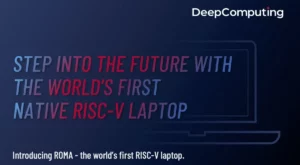Introduction
The world of VLSI (Very Large-Scale Integration) physical design plays a critical role in shaping .today’s technological landscape. From smartphones to data centers, nearly all electronic devices rely on integrated circuits designed using VLSI principles.
If you aspire to master VLSI physical design or enhance your skills in this field, NPTEL (National Programme on Technology Enhanced Learning) offers an array of courses to help you achieve your goals.
In this blog post, we’ll explore two essential NPTEL courses and provide valuable insights into how they can help you excel in VLSI physical design.
Read more: A day in the life of Physical Design engineer
VLSI Design
Course Overview:
The VLSI Design course serves as a foundational pillar for those looking to embark on a journey into the world of VLSI. It covers a wide range of topics crucial for understanding the principles and concepts behind VLSI design.
Key Topics Covered:
- Digital Design Fundamentals
- CMOS (Complementary Metal-Oxide-Semiconductor) Technology
- Layout Design Principles
- ASIC (Application-Specific Integrated Circuit) Design
- Introduction to FPGA (Field-Programmable Gate Array) Design
Benefits:
- Gain a solid understanding of digital design principles.
- Familiarize yourself with CMOS technology, a cornerstone of VLSI.
- Learn the fundamentals of layout design, essential for physical design.
- Explore ASIC and FPGA design, opening up diverse career opportunities.
Physical Design of VLSI Systems:
Course Overview:
Building on the foundation laid by the VLSI Design course, the Physical Design of VLSI Systems course takes a deeper dive into the physical design aspects of integrated circuits. It equips you with the knowledge and skills needed to create efficient and optimized VLSI layouts.
Key Topics Covered:
- Floor planning and Placement
- Routing Techniques
- Timing Closure and Optimization
- Power Optimization
- Chip Design Challenges
Benefits:
- Master floor planning and placement techniques to optimize chip layouts.
- Understand routing strategies for efficient interconnection.
- Achieve timing closure for improved performance.
- Learn power optimization techniques, vital for modern ICs.
- Tackle real-world chip design challenges with confidence.
Advanced VLSI Design and Algorithms:
Course Overview:
For those looking to push the boundaries of VLSI physical design, the Advanced VLSI Design and Algorithms course offers an exciting opportunity to explore cutting-edge techniques and algorithms.
Key Topics Covered:
- Clock Tree Synthesis
- Global Routing
- Physical Verification
- Advanced Optimization Methods
- Emerging Trends in VLSI
Benefits:
- Gain expertise in critical areas like clock tree synthesis and global routing.
- Learn about physical verification tools and methodologies.
- Explore advanced optimization techniques to create high-performance ICs.
- Stay up to date with the latest trends and innovations in VLSI.
- Set yourself apart as an advanced VLSI designer.
Conclusion
Mastering VLSI physical design is a rewarding journey that can lead to exciting career opportunities in the semiconductor industry and related fields. NPTEL’s comprehensive courses, such as “VLSI Design” and “Physical Design of VLSI Systems,” provide the knowledge and skills needed to excel in this dynamic field.
Additionally, for those looking to take their expertise to the next level, the “Advanced VLSI Design and Algorithms” course offers advanced insights and techniques.
To embark on this journey, visit the NPTEL website, explore course offerings, and enroll in the courses that align with your goals.
With dedication and the knowledge gained from these courses, you can become a proficient VLSI physical’s design expert ready to contribute to the development of cutting-edge technology.







